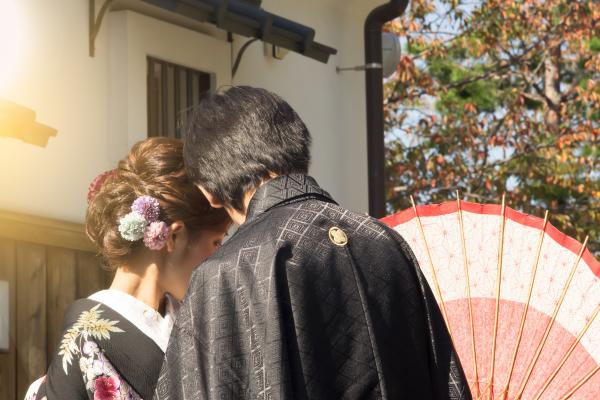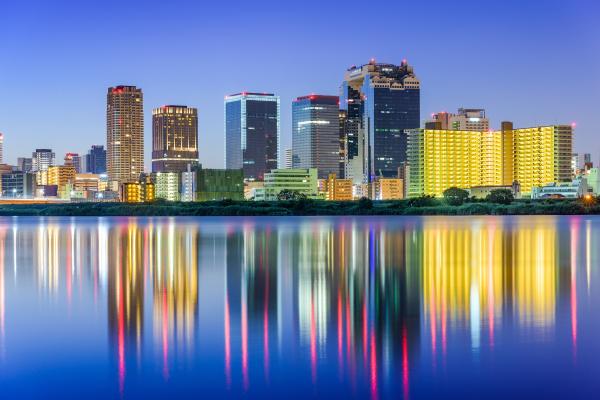 A bride and groom celebrate their wedding in a Japan street - Photo:bigstock.com
A bride and groom celebrate their wedding in a Japan street - Photo:bigstock.com
Tunnels and bridges rush trains, traffic and people across the expanses of the Yodo River in modern day Osaka, but in the mid-19th century, matchstick men, mostly bearing some type of deformity fought the flowing water to propel a variety of barges and small boats from side to side.
It was common in Japan for those bearing the ancestry of deformity or inheriting the bloodstains of abattoirs, tannery or mortuary to cluster in ghettos and labour in the shadows away from the view of wider society.
Thirty-five years on from World War II, these ghettos still existed and although the industries in which the people busied themselves may have changed, they earned their rice on the fringes of society mostly doing the menial and the lowly paid.
It was a surprise when two people arrived at my parish on the fringes of one such area asking about a wedding. One service provided by the Catholic Church in Japan is wedding ceremonies for non-Christians, but over my several years at this parish, no one had ever chosen the drab, grey, ramshackle structure sitting on a dusty block alongside a couple of small demountables and unimposing residence for their wedding day.
While the church may have lacked the sophistication of architectural lines, it was the pride and joy of the men who had arrived on the eastern side of the Yodo River as teenagers seeking refuge from atomic bomb-ravished Nagasaki in 1946. They had canvassed the war torn area for fellow Catholics and began meeting on Sunday mornings to pray.
This was a rich history of a parish founded on the hard work, dedication and initiative of lay people. Its rough simplicity reflected their history and remained as a living monument to their faith and struggle.
As their numbers grew, a priest embarked on the difficult and time-consuming journey from Osaka once a month to celebrate Mass. The bridges and railways had not yet recovered from wartime damage, so the matchstick men from the ghettos would have ferried him across the Yodo.
By 1950, the little band of Catholics was able to purchase the remains of a warehouse, constructing the drab, grey church and unimposing residence from the ruins. A Spanish Dominican became the first parish priest.
This was a rich history of a parish founded on the hard work, dedication and initiative of lay people. Its rough simplicity reflected their history and remained as a living monument to their faith and struggle.
Perhaps its drab face made it attractive to my equally drably dressed surprise visitors, as when I asked, “Why do you want to marry in a Catholic Church?” they simply replied, “Because it is cheap.”
Still there was mystery. Both were in their 40s and neither had married previously. That was strange at the time. They worked in a simple coffee shop outside a factory and their salaries would have been minimal. They lived in an area inhabited by the descendants of the matchstick men of the Yodo River.
They spoke hesitantly, but at length. They happily came to the church while I explained about the symbols and rituals of a wedding. They practiced earnestly, going through things several times to make sure they would remember.
The Yodo River is beautiful at night - Photo:bigstock.com
No, there would not be any guests. I lied a bit, saying we needed two witnesses (these ceremonies have no legal or religious significance), suggesting I would invite a couple of parishioners. They seemed happy with this. And yes, they would like a few flowers and music, even photographs would be good.
The big day dawned - hot and wet. I had called in a favour from the florist across the road. He would happily provide a bouquet and a few flowers. A local photographer would do something on the cheap and a young woman who played the organ at weddings at a rather posh hotel in the city said she was happy to come.
The bride arrived first. Disaster, her borrowed wedding dress did not fit. The florist said his neighbour was a seamstress. He would give her a call. Then the big surprise. About 20 guests arrived with the groom.
The proprietor of a small restaurant in the street was called in. She came up with a simple cake and a couple more telephone calls brought champagne and glasses.
It was a happy day. A couple married. A toast drunk, a cake cut and newly-weds blessed.
The little street community that had made what may well have been a drab day a joyous one gathered at the restaurant to drink one more toast to the newly-weds, just as a torrential summer shower drenched the street.
We wondered how they got on, but never found out. We hoped their street wedding would steel them in their struggle with the stigma a narrow-minded and prejudicial society attributes to their heritage.
Columban Fr Jim Mulroney resides at the Columban house in Essendon.

